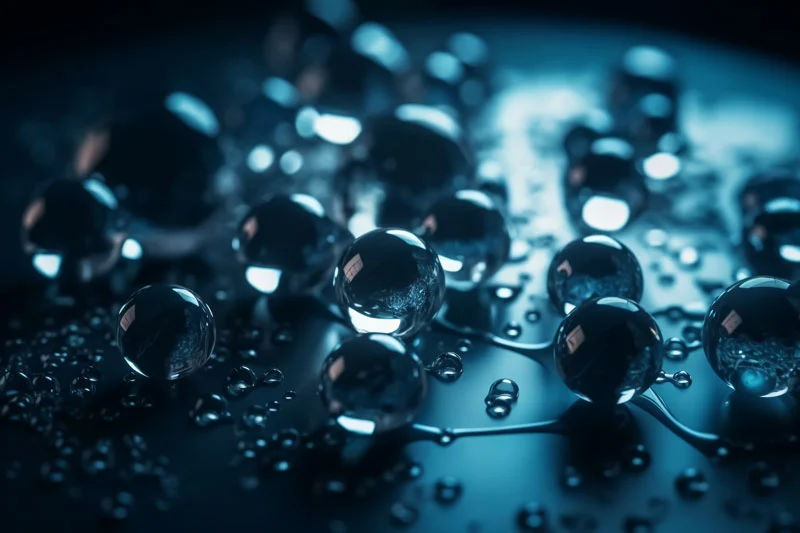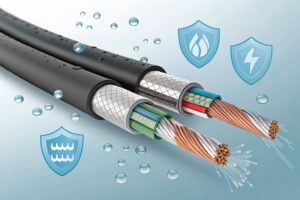What is hydrolysis:
Three types of hydrolysis
- Acid Hydrolysis: Acid hydrolysis involves the breaking of chemical bonds in a compound with the assistance of an acid, typically a strong mineral acid such as hydrochloric acid (HCl) or sulfuric acid (H2SO4). The acid provides protons that catalyze the reaction, leading to the cleavage of bonds and the formation of products. Acid hydrolysis is commonly used in organic chemistry reactions, such as the hydrolysis of esters to form carboxylic acids and alcohols.
- Base Hydrolysis (Alkaline Hydrolysis): Base hydrolysis involves the breaking of chemical bonds in a compound with the assistance of a base, such as sodium hydroxide (NaOH) or potassium hydroxide (KOH). The base provides hydroxide ions (OH-) that catalyze the reaction, leading to the cleavage of bonds and the formation of products. Base hydrolysis is often employed in processes such as saponification, where fats and oils react with alkalis to produce soap and glycerol.
- Enzymatic Hydrolysis: Enzymatic hydrolysis involves the breaking of chemical bonds in a compound with the assistance of enzymes. Enzymes are biological catalysts that facilitate specific chemical reactions without being consumed in the process. Various enzymes, such as proteases, lipases, and carbohydrases, catalyze hydrolysis reactions in biological systems. For example, digestive enzymes in the gastrointestinal tract catalyze the hydrolysis of proteins, fats, and carbohydrates into their constituent amino acids, fatty acids, and sugars, respectively, for absorption by the body.
How to prevent hydrolysis?
Hydrolysis is a chemical reaction where a compound reacts with water, resulting in the splitting of a chemical bond in the compound. Preventing hydrolysis depends on the specific compound or situation involved. Here are some general strategies to prevent hydrolysis:
- Protective Coatings: For substances that are susceptible to hydrolysis, applying a protective coating can help to prevent direct contact with water molecules. This could be a physical barrier or a chemical coating that repels water.
- Controlled Environment: Maintain conditions where the compound is not exposed to water or moisture. This could involve controlling humidity levels, temperature, or storing the compound in a dry environment.
- Inert Atmosphere: In some cases, storing the compound in an inert atmosphere, such as nitrogen or argon, can prevent exposure to water vapor in the air.
- Chemical Stabilizers: Adding chemical stabilizers to the compound can help prevent hydrolysis by inhibiting the reaction with water. These stabilizers can form protective layers or bind to reactive sites, preventing water molecules from reaching them. See more about HYDROLYSIS STABILIZER
- pH Control: Hydrolysis reactions often depend on the pH of the environment. Controlling the pH to levels where hydrolysis is less likely to occur can help prevent the reaction. This could involve adjusting the pH with acids or bases or buffering the solution.
- Desiccants: Using desiccants to absorb moisture from the environment can help prevent hydrolysis by reducing the amount of water available to react with the compound.
- Avoiding Water Contamination: Ensuring that equipment, containers, and surfaces are dry and free from water contamination can prevent unintentional hydrolysis reactions.
- Proper Storage: Store the compound in appropriate containers that are tightly sealed to prevent moisture ingress. Additionally, ensure that the storage conditions (temperature, humidity, etc.) are suitable for preventing hydrolysis.
- Chemical Modification: Sometimes, modifying the chemical structure of the compound can make it less susceptible to hydrolysis. This could involve substituting reactive functional groups with more stable ones or altering the molecular structure in a way that reduces susceptibility to hydrolysis.
- Use of Hydrophobic Materials: Choosing materials that are inherently resistant to water or hydrophobic can prevent hydrolysis. This applies particularly to polymers and other materials where water penetration can trigger hydrolytic degradation.







